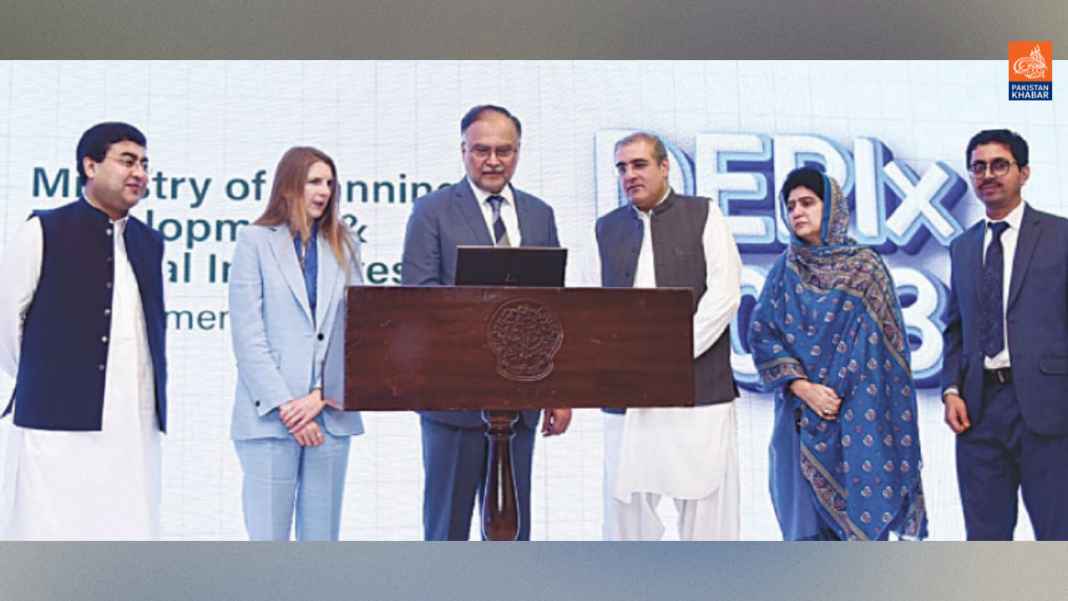An official report released on Friday classified Pakistan’s education system in the ‘low’ performance category, emphasizing the need for critical improvements to enhance educational outcomes.
The District Education Performance Index (DEPIx) Report 2020-23, published by the Planning Commission, revealed that Pakistan’s national average score in the DEPIx is 53.46, placing the country in the “low” performance bracket.
The report evaluated five domains, with infrastructure and access scoring the highest at 58.95, reflecting some progress in expanding educational opportunities. The domain of inclusion, which encompasses equity and technology, ranked as the second highest.
Public financing recorded the lowest score, underscoring the necessity for increased and better-targeted investment in the education sector. The learning domain also performed poorly, highlighting consistently low learning outcomes among students.
“Governance and management, while slightly better than the learning domain, remains in the ‘low’ category, primarily due to teacher shortages and high bureaucratic turnover,” the report noted.
None of the 134 districts assessed fell within the ‘very high’ performance category, with only Islamabad being placed in the ‘high’ category.
The report acknowledged that while Pakistan has achieved middle-income status and made significant strides in human capital development over the past decades, this progress has been slower compared to other developing countries and regional peers.
This sluggish pace of human capital development presents challenges not only in realizing the potential demographic dividend but also in achieving the Sustainable Development Goals (SDGs) by 2030 and attaining upper-middle-income status by 2047.
The report emphasized that providing quality and inclusive education is crucial for human capital development. In 2010, policy, administrative, and fiscal authority over education was devolved to the provinces by parliament, and the right to free education was enshrined as a fundamental right through Article 25-A of the Constitution.
Since then, provincial governments have passed compulsory education laws, increased budget allocations for school education, and implemented various governance and data reforms.
Notably, improvements in the education data system have enhanced the availability of data on education indicators. However, the complexity, breadth, and fragmentation of education data have often posed challenges for policymakers and stakeholders in using it effectively for decision-making.
To address these challenges and support the education emergency declared by Prime Minister Shehbaz Sharif in May, the Planning Commission integrated various school education indicators into composite scorecards.
The DEPIx is structured around five domains: infrastructure and access, learning, inclusion (equity and technology), governance and management, and public financing. It covers 134 districts across Pakistan, including Balochistan, Khyber Pakhtunkhwa (KP), Punjab, Sindh, and the Islamabad Capital Territory (ICT).
In addition to providing a national overview, the report also presented a provincial analysis. Punjab emerged as the top-performing province with a composite score of 61.39, followed by KP with a score of 54.88, while Sindh and Balochistan lagged behind with scores of 51.49 and 45.70, respectively.
At the district level, the report revealed that none of the 134 districts falls within the “very high” performance category, with only Islamabad in the “high” category, making it an outlier as the highest-performing district.
Alarmingly, more than half of Pakistan’s districts (76) are in the “low” performance category, with these low-performing districts predominantly located in Balochistan and Sindh, where 33 districts in Balochistan and 22 in Sindh fall into this category. Notably, all districts in Balochistan are classified as “low” education performance areas, indicating severe challenges throughout the province.
Apart from the ICT, the top 10 districts are exclusively from Punjab and KP, with seven from Punjab and two from KP. No districts from Sindh or Balochistan are represented among the top 10.
The report also highlighted significant intra-provincial disparities in education performance. KP showed the greatest variation, with districts like Haripur, Chitral, and Abbottabad among the top performers, while Kolai Palas, Upper Kohistan, and Lower Kohistan ranked among the lowest. There is nearly a 30-point gap between the best and worst-performing districts in KP. Punjab and Balochistan showed the least variation within provinces, with Punjab’s districts mostly in the medium category and all of Balochistan’s districts in the low category. Sindh exhibited moderate variation, with most districts in the “low” category, except for the urban districts of Karachi and Hyderabad.




